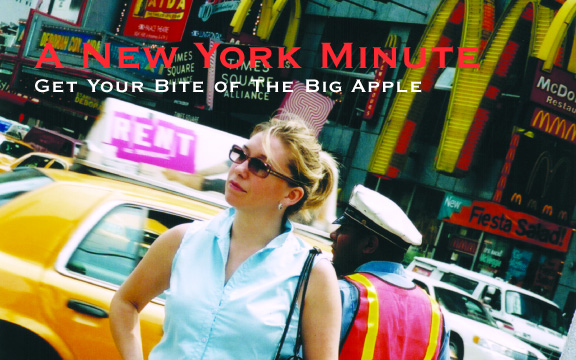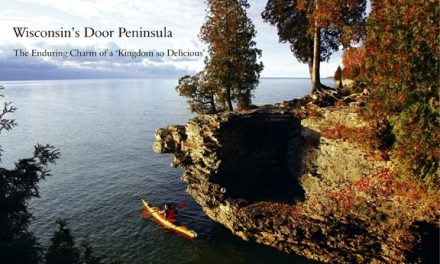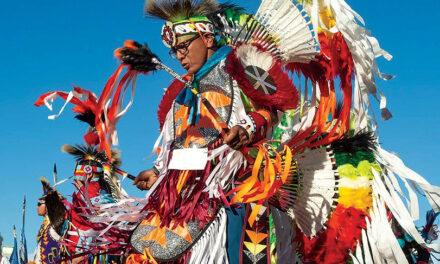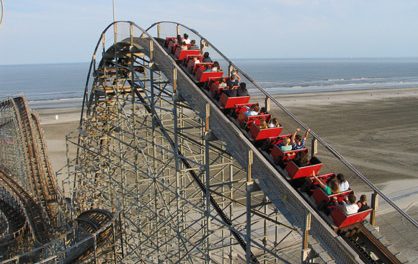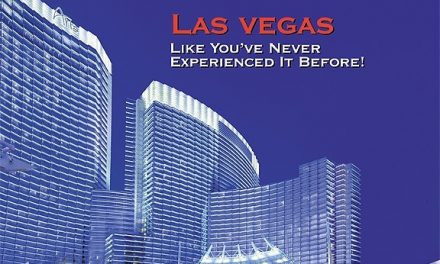A New York Minute
Get Your Bite of The Big Apple
Published in the July-August, 2004 Issue of Canadian World Traveller
Text edited by Greg James
Photos by Michael Morcos and courtesy of NYC & Company www.nycvisit.com
Some people think that Manhattan and New York City are synonymous, but they are not. Manhattan is only one of the five boroughs that make up New York City; the others are the Bronx, Brooklyn, Queens, and Staten Island. There’s much to see and do in the other boroughs, but exploring Manhattan thoroughly could take weeks in itself. In the following brief article, we have decided to explore the neighborhoods of Manhattan where we hope you will find your bite of the Big Apple.
Chinatown
South of Canal Street lies bustling Chinatown, which has over the years expanded into the Lower East Side and Little Italy. The largest Asian community in North America can be found among the narrow streets between Worth and Hester and East Broadway and West Broadway; its main street is Canal Street. Within these boundaries, you’ll find traditional Chinese shops and hundreds of restaurants serving every imaginable type of Chinese cuisine.
Civic Center
Just to the west of the TriBeCa (Triangle Below Canal) triangle is Manhattan’s Ci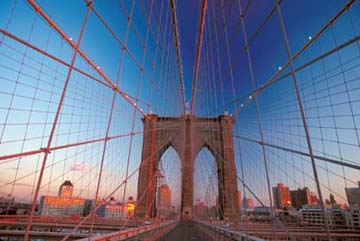 vic Center where City Hall and majestic court buildings line the streets. Down the street is the Municipal Building, the government’s first skyscraper (built in 1914) and where you actually get married when you have a civil ceremony “at City Hall.” Just south of the building, a pedestrian walkway leads to the Brooklyn Bridge and its world-class view.
vic Center where City Hall and majestic court buildings line the streets. Down the street is the Municipal Building, the government’s first skyscraper (built in 1914) and where you actually get married when you have a civil ceremony “at City Hall.” Just south of the building, a pedestrian walkway leads to the Brooklyn Bridge and its world-class view.
East Village
During the 19th century, millionaires like the Astors and Vanderbilts had homes in East Village, but the waves of Irish, German, Jewish, Polish, and Ukrainian immigrants who flooded into New York City in the 1900s soon displaced the elite, who moved uptown.
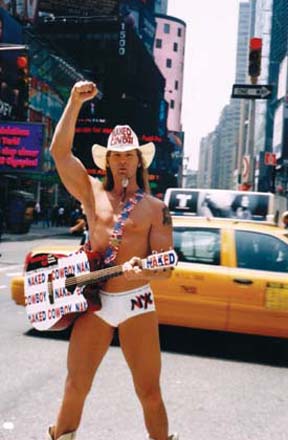 Since then, the area has been home to the Beat generation of the 1950s, hippies in the 1960s, and punks in the late 1970s and 1980s. Today it’s still a young person’s neighborhood, with its experimental music clubs and theaters, cutting-edge fashion and the most varied assortment of ethnic restaurants in New York City.
Since then, the area has been home to the Beat generation of the 1950s, hippies in the 1960s, and punks in the late 1970s and 1980s. Today it’s still a young person’s neighborhood, with its experimental music clubs and theaters, cutting-edge fashion and the most varied assortment of ethnic restaurants in New York City.
Greenwich Village
Greenwich Village – also known as the West Village or the Village – has been home to artists and writers, nonconformists, entertainers, intellectuals, and bohemians since the turn of the 20th century. Washington Square Park and the rows of townhouses around it with charming alleys and New York University are in the Village.
At night, Greenwich Village comes alive with sounds from late-night coffeehouses, cafés, experimental theaters, and bars and music clubs. The Village is also home to a large community of gays and lesbians.
Harlem
A Mecca for African-American culture and life for more than a century, Harlem started out as Nieuw Haarlem, a prosperous Dutch farming settlement. By the turn of the 20th century, black New Yorkers started moving uptown into Harlem’s apartment buildings and town houses. The neighborhood prospered and by the 1920s, Harlem had become the most famous black community in the United States, perhaps in the whole world. The Harlem Renaissance, generally regarded as occurring between 1919 and 1929, was Harlem’s golden era. The Apollo Theatre, a concert venue for African-American luminaries as well as a rite of passage for rising musicians.
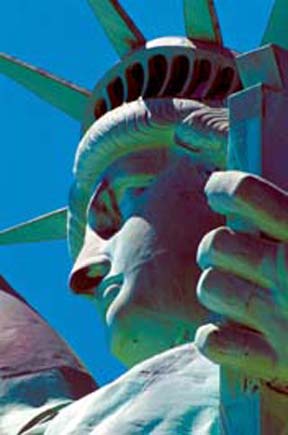 Little Italy
Little Italy
The heart of Little Italy is Mulberry Street. In the second half of the 19th century, NYC’s Italian immigration reached its peak, with several Italian parishes and an Italian-language newspaper. Today, there are fewer than 5,000 Italians living in Little Italy, but the heavenly aromas of the Italian bakeries and restaurants still waft around Mulberry and Grand Streets.
Lower East Side
This is New York’s landmark historic Jewish neighborhood, which was once the world’s largest Jewish community. It was here that the New York garment industry began. Today it is one of New York’s favorite bargain beats, where serious shoppers find fantastic bargains (especially along Orchard Street on a Sunday afternoon), cutting-edge new designers, and hot bars and music venues – and possibly the best place to get a great pastrami sandwich, pickles out of a barrel, and the world’s best bialys.
Lower Manhattan
The lower tip of Manhattan (called Lower Manhattan or Downtown), where the East and Hudson rivers meet, is where New York City began.The heart of it all is the area clustered around Wall Street. The New York Stock Exchange and the Federal Reserve Bank and the site of the former World Trade Center are found here. Broadway, one of New York’s oldest thoroughfares and the only avenue to cut diagonally across Manhattan, runs through the area.
At the bottom of the island, Battery Park offers fine views of harbor islands – Governor’s Island, Staten Island, the Statue of Liberty on Liberty Island, and Ellis Island. Frequent ferry service to the islands departs from South Ferry & Battery Park.
Midtown
Midtown is the center of many visitors’ trips to New York City. The beautifully restored Grand Central Terminal is paces away from the Chrysler Building, the United Nations complex, Rockefeller Center, St. Patrick’s Cathedral, and Trump Tower.
There’s the fascinating Morgan Library and the awesome New York Public Library, both of which have changing exhibitions. And what says New York better than Fifth Avenue stores? Midtown also includes the new, revitalized Times Square and the Theater District, where world-famous Broadway productions wow audiences nightly. The Museum of Modern Art, Carnegie Hall, and Radio City Music Hall are all midtown attractions.
SoHo
Within only a quarter of a square mile, SoHo has an estimated 250 art galleries, four museums, nearly 200 restaurants, and 100 stores.
The blocks south of Houston and north of Canal streets are home to the city’s largest concentration of the cast-iron fronted buildings, built as warehouses and manufacturing spaces, but converted to living spaces, called “lofts,” for artists and sculptors who appreciated the larger spaces. These huge, 19th-century architectural gems are prized by preservationists and the well-heeled bohemians of SoHo who call the neighborhood home.
Upper East Side
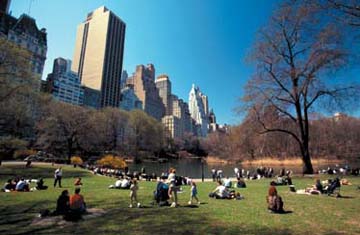 This is the city’s Gold Coast. The neighborhood air is perfumed with the scent of old money, conservative values, and glamorous sophistication, with Champagne corks popping and high society puttin’ on the Ritz.
This is the city’s Gold Coast. The neighborhood air is perfumed with the scent of old money, conservative values, and glamorous sophistication, with Champagne corks popping and high society puttin’ on the Ritz.
Bloomingdale’s – one of the NYC shopping icons, a beloved sanctuary for stylish consumers is found here. On Madison Avenue, window shopping can be intoxicating and Park Avenue is the city’s most coveted residential addresses.
Once Manhattan’s Millionaire’s Row, the stretch of Fifth Avenue between 72nd and 104th Streets has been renamed Museum Mile because it houses the Metropolitan Museum of Art and the Guggenheim Museum. This stretch is lined on one side with the former mansions on the other side by Central Park.
Upper West Side
The Upper West Side is separated from the Upper East Side by Central Park. This is the traditional stronghold of the city’s intellectual, creative, and moneyed community, but the atmosphere is not as upper crust as the Upper East Side.
The famous Lincoln Center for the Performing Arts sits between 61st and 66th Streets on Broadway. It is home to the New York State Theater, New York City Ballet, the New York City Opera, the Metropolitan Opera House, Avery Fisher Hall, and the New York Philharmonic Orchestra.
For More Info:
NYC & Company
810 Seventh Avenue
New York, NY 10019
U.S.A.
Tel.: (212) 484-1200
Fax: (212) 245-5943
E-mail: nytourism@nycvisit.com
www.nycvisit.com
American Consulate
1155, rue St-Alexandre,
Montréal, QC
H2Y 2W7
Tel.: (514) 398-9695
E-mail: Montreal-NIV@state.gov
www.usembassycanada.gov

